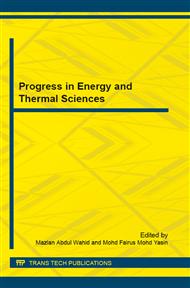p.47
p.52
p.58
p.63
p.69
p.74
p.79
p.86
p.91
Review on Dissolved Fault Gases in Monitoring Bio-Oil Filled Transformer
Abstract:
The combination of solid insulation (usually cellulose paper) and liquid insulation (usually mineral oil) yield good dielectric properties at fair cost. However, arising concerns on environmental effect of mineral oil when leakage and its risk of fire has force researches for alternative fluids. One of the suitable options for replacement of mineral oil is biodegradable oil that is plant-based, high biodegradability, non-toxicity and high fire point. Some refining and modification to crude vegetable oils resulting to suitable transformer dielectric fluid such as BIOTEMP®, ENVIROTEMP® FR3 and PFAE (palm fatty acid ester). Application of these oils in small scale distribution transformers give positive feedback so far, hence, led to development of biodegradable oil-based large power transformer. Monitoring of the oil for power transformer is important to ensure its reliability and avoid unnecessary cost of failure. Dissolved Gas Analysis (DGA) is one of the methods for oil monitoring of transformer. This method analyzes oil condition to detect incipient faults so that relevant actions can be made before actual failures occur. This paper will review the hydrocarbon gases or known as faults gases for monitoring and faults diagnosis for mineral and biodegradable oil-filled transformer. Past works about DGA on biodegradable oil such as sunflower, soybean, and corn oil are analyzed. Any different on gases production of oil through different tests will be discuss further in this paper.
Info:
Periodical:
Pages:
69-73
Citation:
Online since:
January 2016
Authors:
Keywords:
Price:
Сopyright:
© 2016 Trans Tech Publications Ltd. All Rights Reserved
Share:
Citation:


